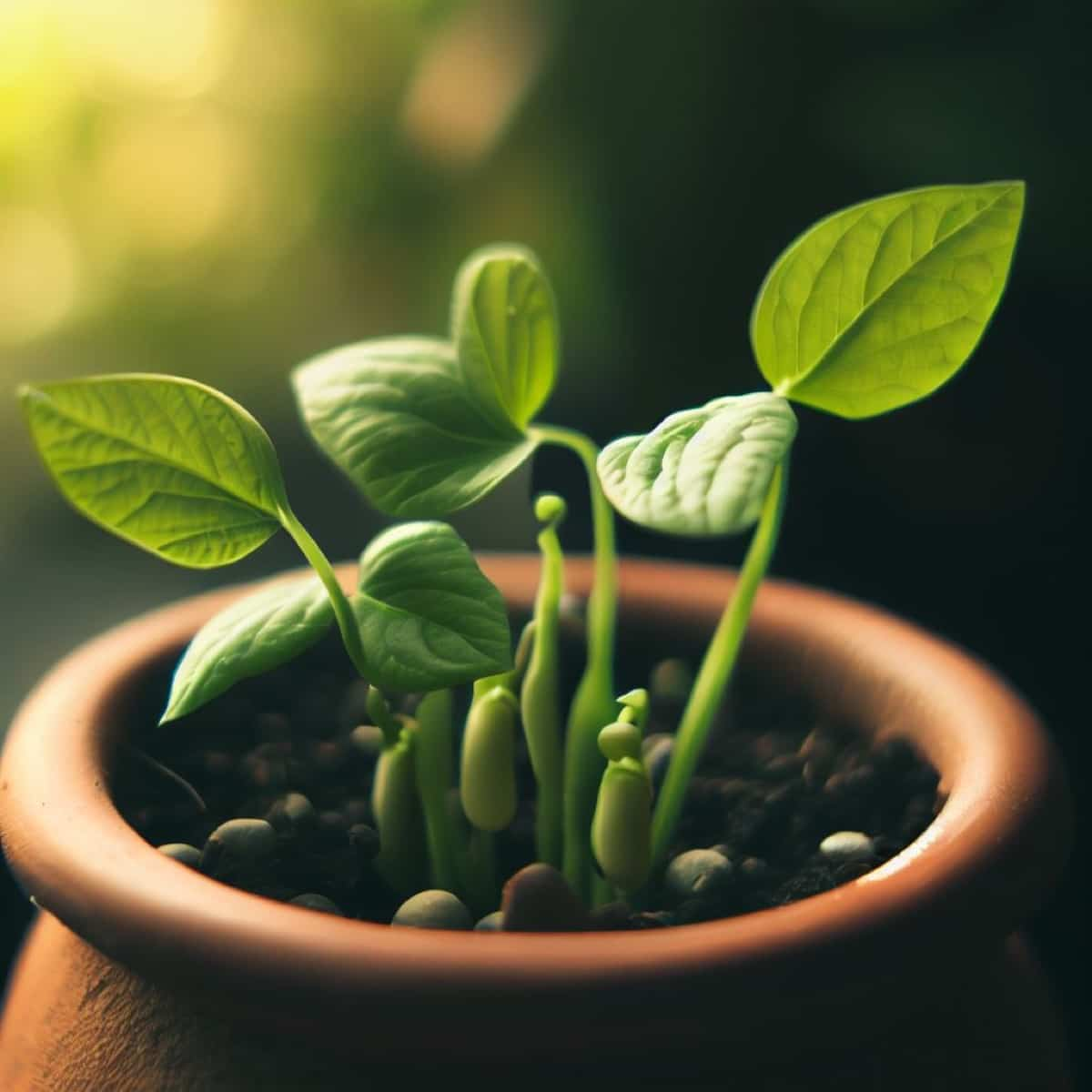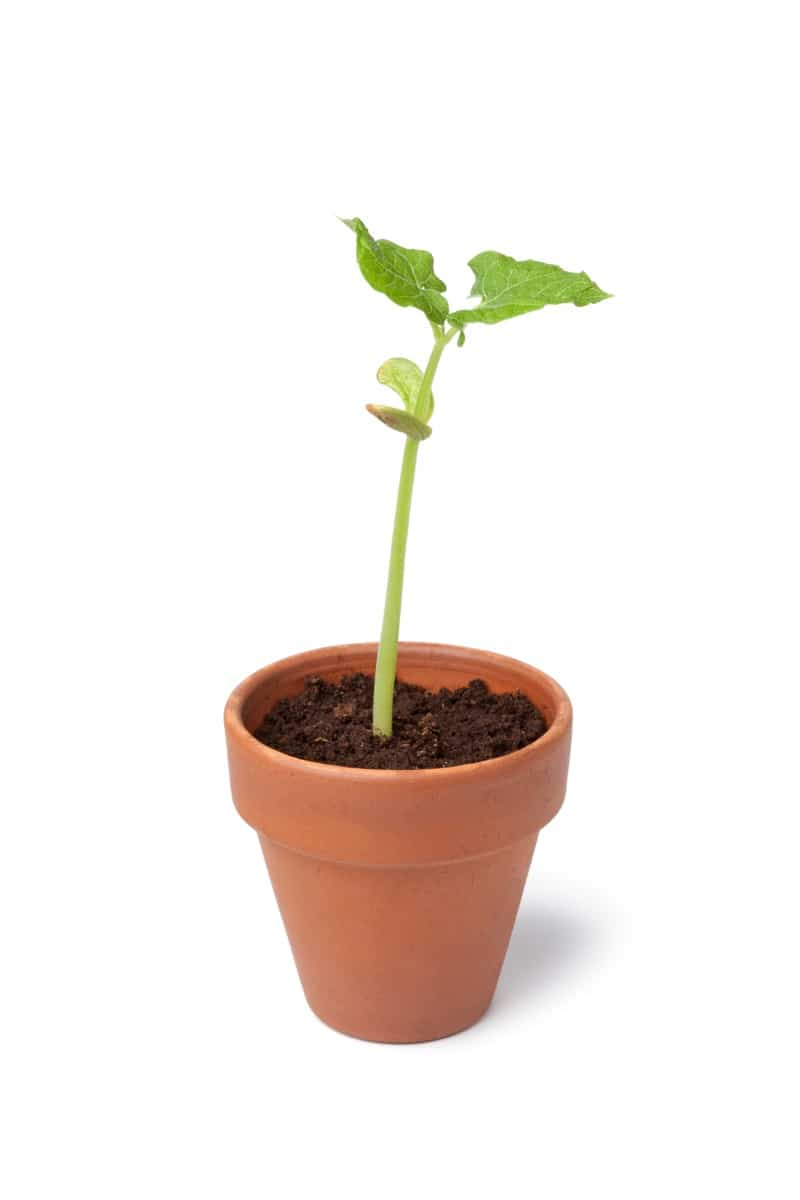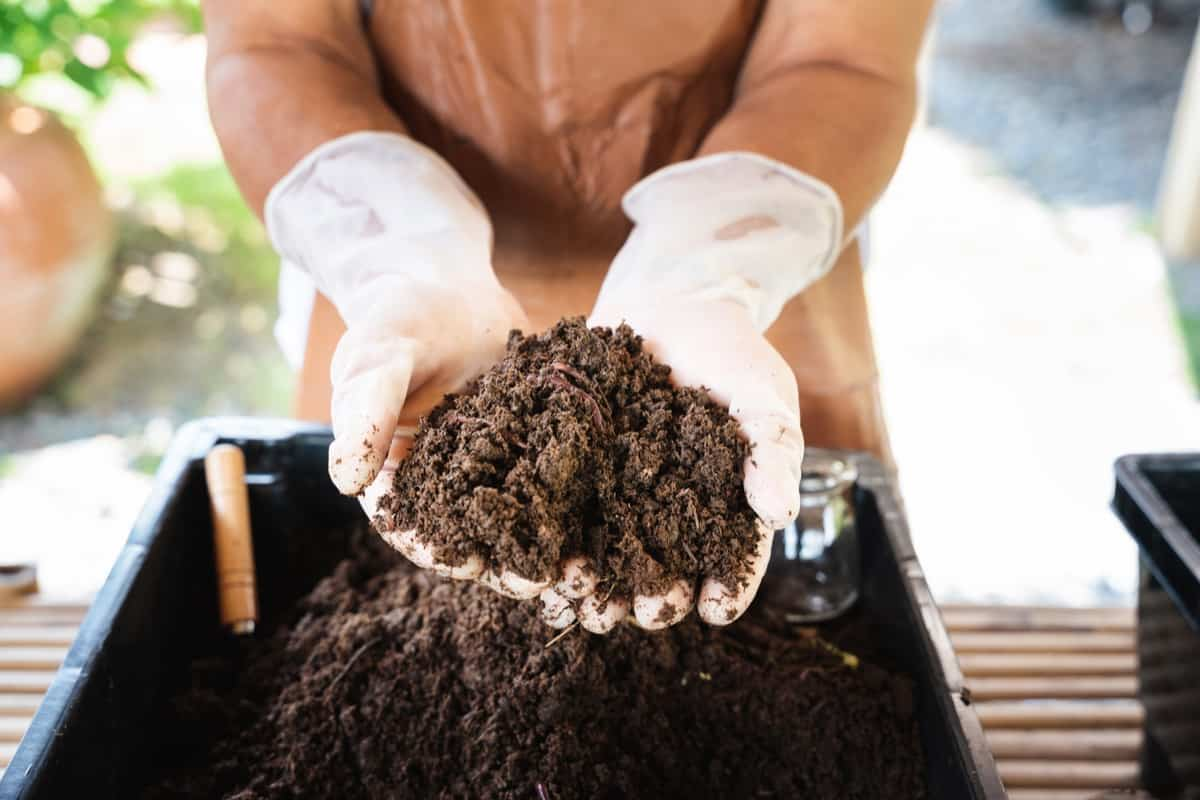Beans growing in pots allows for easy maintenance and mobility. To ensure healthy growth and abundant harvests, it is essential to provide your bean plants with the right nutrients. When it comes to fertilizing potted bean plants, using organic fertilizers can be an excellent choice. Organic fertilizers are produced from natural sources and provide nutrients to your plants in a safe and environmentally friendly way. By opting for organic fertilizers, you can nurture your plants naturally and promote their overall health and growth.

Best Fertilizer for Potted Beans
Organic Fertilizers for Beans in Pots: Nurturing Your Plants Naturally
Organic fertilizers offer a natural and sustainable solution for nurturing your plants. Composed of natural materials like compost, manure, and plant-based materials, these fertilizers enrich the soil, promoting nutrient absorption and enhancing plant growth. By using organic fertilizers, you not only support the health of your plants but also contribute to the overall well-being of the environment.
Natural Fertilizers for Beans in Pots: For Environmentally-Friendly Options
When it comes to fertilizing your beans in pots, natural options provide an eco-friendly choice. Natural fertilizers, such as seaweed extracts, bone meal, and fish emulsion, offer a chemical-free approach to nourishing your plants. These fertilizers are produced from organic sources and provide essential nutrients to support the growth of your bean plants. By opting for natural fertilizers, you contribute to preserving the environment, ensuring a greener and healthier future for generations to come.
Homemade Fertilizers for Beans in Pots: DIY Solutions for Optimal Plant Health
Homemade fertilizers can be a cost-effective and eco-friendly solution for promoting optimal plant health in potted beans. One DIY option is compost tea, which steers compost in water to prepare a nutrient-rich liquid. Another option is banana peel fertilizer, which can be made by blending banana peels with water and then applying the mixture to the soil.
Additionally, eggshell fertilizer can be created by crushing eggshells into powder and sprinkling them around the base of the plants. These homemade fertilizers provide essential nutrients like nitrogen, phosphorus, and potassium, promoting healthy growth and abundant bean harvests. With these DIY solutions, potted bean plants can thrive and flourish.
NPK Ratios and Their Importance in Selecting Fertilizers for Beans in Pots
NPK ratios are crucial in selecting the right fertilizers for beans grown in pots. NPK refers to the three essential nutrients needed for plant growth: nitrogen (N), phosphorus (P), and potassium (K). These nutrients are necessary for healthy bean plants, aiding in root development, flowering, and fruit production. The NPK ratio defines the relative proportions of these nutrients in a fertilizer.
A balanced ratio like 10-10-10 is suitable for beans, providing equal amounts of N, P, and K. However, adjusting the NPK ratio can optimize bean plant growth during different growth stages. Understanding NPK ratios is essential for ensuring the right fertilizer selection and successful bean cultivation in pots.
Slow-release Fertilizers: Enhancing Nutrient Availability for Beans in Pots
Slow-release fertilizers are an effective way to enhance nutrient availability for beans grown in pots. These fertilizers are designed to gradually release nutrients over an extended period, providing a steady supply of essential elements for plant growth. This slow-release mechanism helps prevent nutrient leaching and ensures that the beans receive a consistent and balanced diet.
In case you missed it: How to Grow Yardlong Beans from Seed: A Comprehensive Guide for Beginners

The nutrients are encapsulated in a coating that breaks down slowly, allowing for a controlled release. This reduces the frequency of fertilizer applications and minimizes the risk of nutrient burn. Overall, slow-release fertilizers are convenient and efficient for promoting healthy bean growth in potted environments.
pH Levels and Fertilizer Selection for Beans in Pots: For Balanced Soil Environment
Maintaining the right pH levels and choosing the appropriate fertilizer for pot beans is crucial to ensure a balanced soil environment. Beans prefer a slightly acidic to neutral pH range of 6.0 to 7.0. To achieve this, it is important to regularly monitor the pH levels of the soil using a pH testing kit. If the pH is too high or too low, adjustments can be made using organic additives like peat moss or compost.
When selecting a fertilizer, choose a balanced formula with equal ratios of N, P, and K. This will provide the necessary nutrients for healthy bean growth. Follow the package instructions for proper application. Maintaining proper pH levels and selecting the right fertilizer can create an ideal soil environment for thriving beans in pots.
The Importance of Timing: When to Apply Fertilizer to Beans in Pots
Fertilizing beans in pots at the right time is crucial for optimal growth and yield. Timing is key when applying fertilizer to beans. As a general rule, applying a balanced fertilizer, such as a 10-10-10 blend, is recommended when the beans have developed their first true leaves. This usually occurs around two to three weeks after planting.
Applying fertilizer too early can lead to excessive vegetative growth, while applying it too late may result in poor fruit development. Regular applications every three to four weeks throughout the growing season can help ensure a steady and healthy supply of nutrients for the beans in pots, promoting vigorous growth and abundant harvest.
In case you missed it: Beans Plant Flowers but No Fruit: Reasons, Remedies, and How to Fix

How to Apply Fertilizer to Beans in Pots: Techniques for Maximum Effectiveness
To apply fertilizer to pot beans for maximum effectiveness, follow these techniques. First, choose a balanced fertilizer with equal nitrogen, phosphorus, and potassium. Start by preparing the soil and removing any weeds. Then, sprinkle the fertilizer evenly over the soil surface, ensuring it doesn’t touch the plant stems.
Gently mix the fertilizer into the top inch of soil using a hand cultivator. Water the plants immediately after fertilizing to help the nutrients penetrate the soil. Finally, repeat the process every four to six weeks throughout the growing season to nourish the beans.
Water-soluble Fertilizer for Potted Beans Plants
Water-soluble fertilizer is an effective option for nourishing potted bean plants. This type of fertilizer is designed to dissolve easily in water, allowing the nutrients to be readily absorbed by the plants’ roots. The soluble nature of the fertilizer ensures that it is evenly distributed throughout the soil, preventing the risk of nutrient imbalance.
Potted bean plants require a balanced blend of essential nutrients, including nitrogen, phosphorus, and potassium, to support healthy growth and development. Water-soluble fertilizer provides a convenient and efficient way to deliver these nutrients to the plants, promoting vibrant foliage and bountiful bean production. Regularly applying water-soluble fertilizer according to the manufacturer’s instructions will help ensure optimal plant health and productivity.
In case you missed it: Beans Companion Plants: What to Plant Next to Beans and What Not to Plant Next to Beans?

Conclusion
Fertilizing potted bean plants is essential for their overall health and productivity. You can nurture your plants by opting for organic or natural fertilizers while minimizing environmental impact. If you prefer a DIY approach, homemade fertilizers allow you to tailor the nutrient content to meet your plants’ specific needs. With the right fertilization practices, your potted bean plants can thrive and yield bountiful harvests.
- Feed Your Flock for Less: Top 10 Tips to Save on Chicken Feed
- Ultimate Guide to Ossabaw Island Hog: Breeding, Raising, Diet, and Care
- Hatching Answers: The Top 10 Reasons Your Chickens Aren’t Laying Eggs
- Eggs and Economics: Breaking Down the Cost of Raising Backyard Chickens
- Defend Your Greens: Proven Methods to Keep Iguanas Out of Your Garden
- Ultimate Guide to Cinnamon Queen Chicken: A Comprehensive Guide for Beginners
- Ultimate Guide to California Tan Chicken: Breeding, Raising, Diet, Egg-Production and Care
- Ultimate Guide to Marsh Daisy Chicken: Breeding, Raising, Diet, and Care
- 10 Types of Chicken Farming Businesses You Can Start for Profits